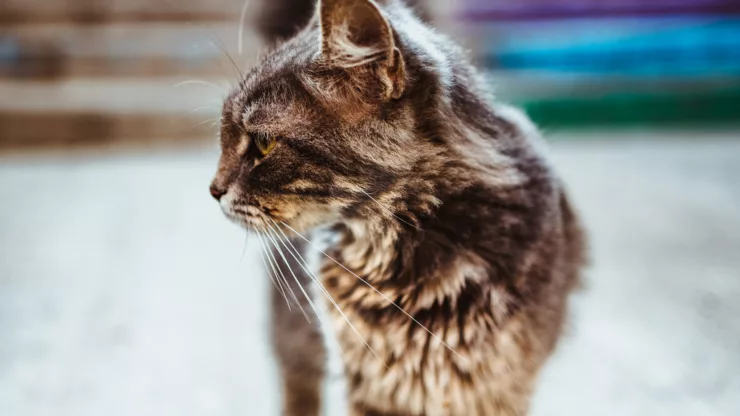When we think of encountering wild animals, we usually imagine going on safaris or hiking through forests and mountains.
However, as urbanization continues to sprawl, wild animals are finding their way into cities and towns.
In this article, we will explore some of the extraordinary animal encounters people have had in urban areas, and how we can learn to coexist with them.
Jump to Section
Urban Wildlife: Surprising and Unpredictable
The rise of urbanization has led to the displacement of many wildlife habitats, forcing animals to adapt to new environments.
While some species have not been able to adapt well, others have thrived in urban areas.
This has led to surprising and unpredictable encounters with wildlife in urban settings.
Some examples of urban wildlife include:
- Coyotes in Los Angeles
- Raccoons in Toronto
- Red foxes in London
- Otters in Singapore
These animals have adapted to urban environments by scavenging for food in garbage bins, hunting small prey, and even crossing busy roads.
While these encounters can be thrilling and exciting, it is important to remember that wild animals are unpredictable and can be dangerous if provoked or threatened.
Animal Adventures in the Concrete Jungle
Despite the potential dangers of encountering wild animals in urban areas, many people have had incredible experiences with them.
From spotting a deer in Central Park to watching a family of otters play in a Singaporean canal, these encounters have shown us a different side of urban life.
Some notable animal adventures in the concrete jungle include:
- A group of whales swimming in New York Harbor
- A leopard wandering through the streets of Mumbai
- A group of dolphins swimming in the Venice Canal in Italy
These encounters remind us of the beauty and resilience of wildlife, and the importance of protecting their habitats even in urban areas.
From Coyotes to Otters: Unexpected Encounters
Encounters with urban wildlife can be unexpected, but they can also be incredibly rewarding. Many people have shared their experiences of encountering wild animals in cities, including:
- A woman in Toronto who befriended a family of raccoons who visited her backyard every night
- A man in Los Angeles who spotted a coyote walking down his street and followed it to its den
- A group of school children in London who watched a red fox playing in a park
These encounters have allowed people to connect with nature in unexpected ways, and have shown us that even in the midst of concrete and steel, nature continues to thrive.
The Wonders of Coexisting with Urban Animals
While urbanization can be detrimental to wildlife habitats, it is possible for humans and animals to coexist in urban areas.
By taking steps to reduce our impact on the environment and preserving green spaces, we can create a habitat that is conducive to both humans and animals.
Some ways to coexist with urban animals include:
- Keeping garbage bins secure to prevent scavenging
- Planting native trees and flowers to provide habitats and food sources for wildlife
- Reducing light pollution to minimize the impact on nocturnal animals
By working together, we can create an urban environment that is sustainable and supportive of wildlife.
FAQ
How can I safely observe urban wildlife?
It is important to remember that wild animals are unpredictable and can be dangerous if provoked or threatened.
To safely observe urban wildlife, it is recommended to keep a safe distance and avoid approaching them.
If you do encounter a wild animal, remain calm and slowly back away.
What should I do if I see an injured animal in the city?
If you encounter an injured animal in the city, it is recommended to contact local animal welfare organizations or wildlife rehabilitation centers.
Do not attempt to handle or move the animal yourself, as this can cause further harm.
How can I reduce my impact on urban wildlife habitats?
To reduce your impact on urban wildlife habitats, you can:
- Use eco-friendly products and reduce waste
- Plant native species in your garden or balcony
- Support local conservation organizations and initiatives.
I’m a nature enthusiast and creator of Metro Wilds and have spent years exploring the great outdoors.
With a passion for environmental conservation and sustainability, I have dedicated my career to writing about the beauty and wonders of nature, as well as the threats facing our planet.
Contact me at [email protected] for assistance.





